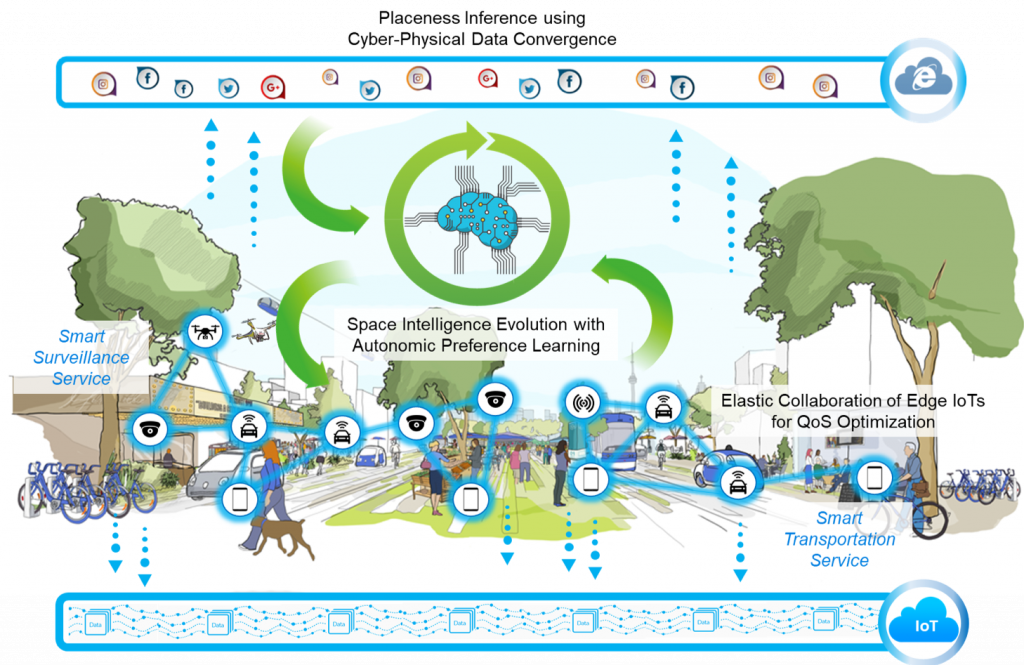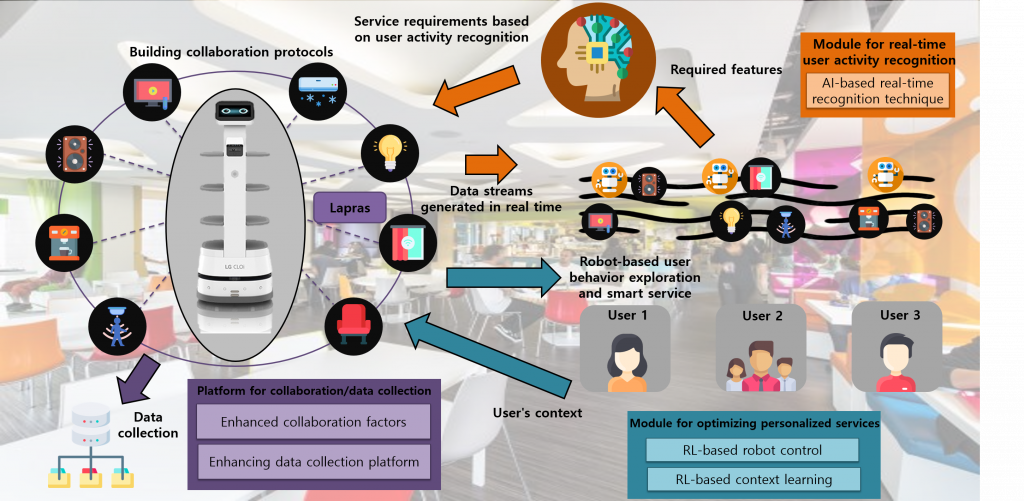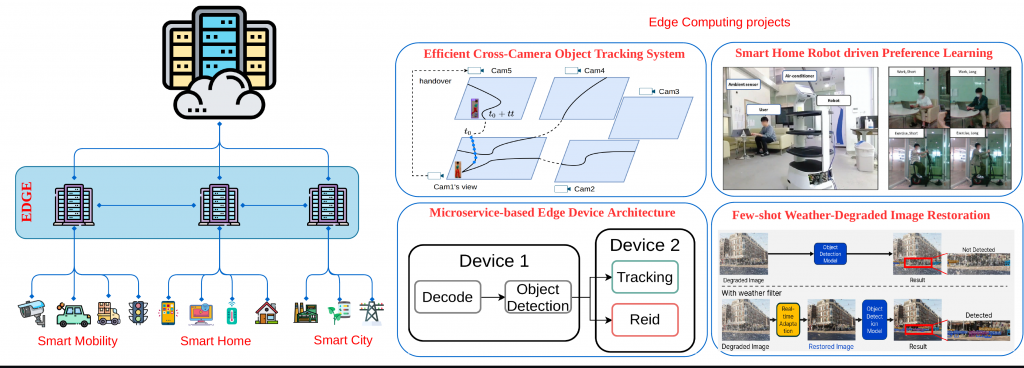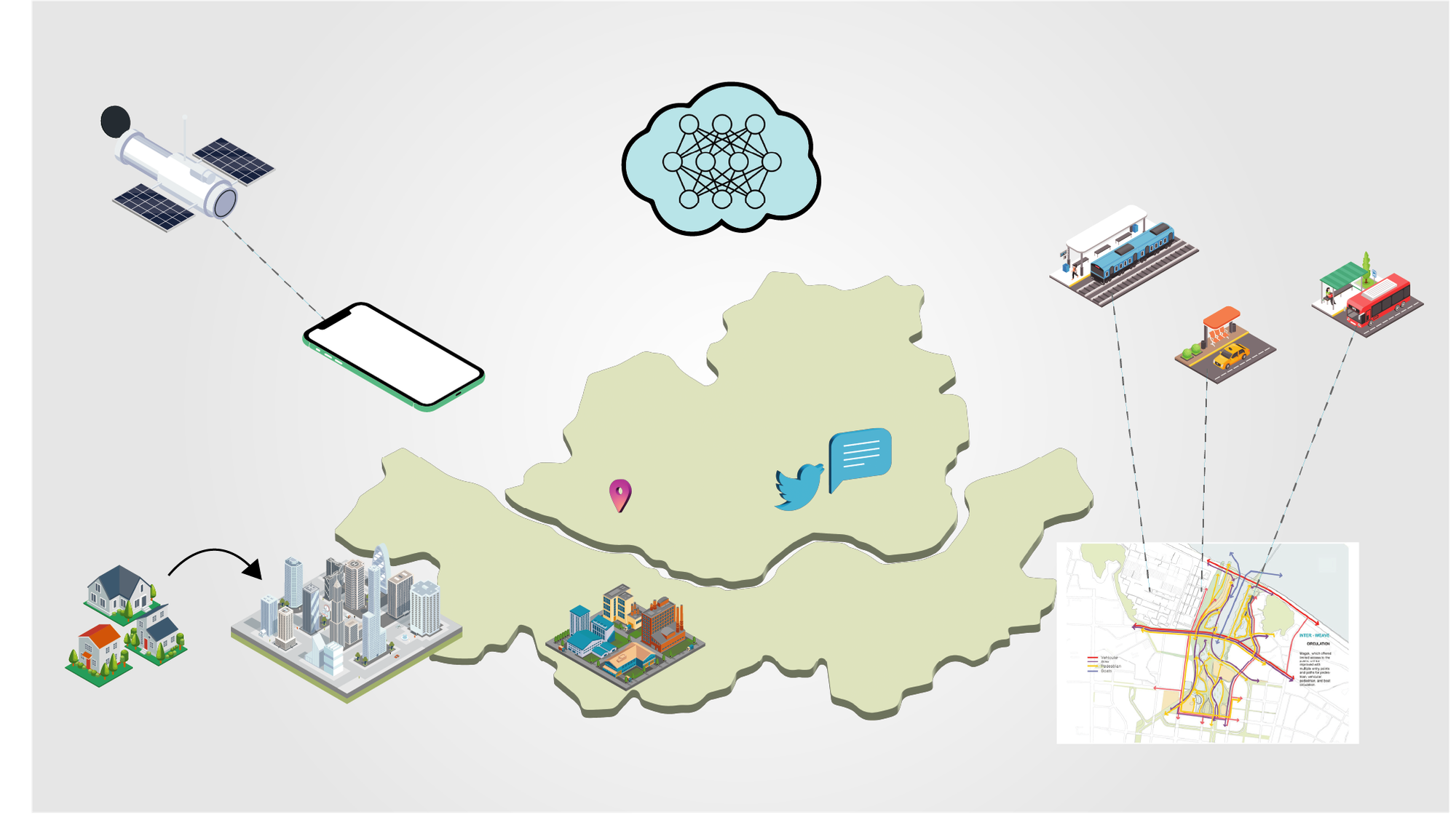Urban Space Robot Platform

Placeness Inference using Cyber-Physical Data Convergence
Our research team is dedicated to understanding the characteristics of various urban areas through data analysis, and using this knowledge to predict future urban transformations. Our previous studies have focused on developing machine learning models to prevent gentrification—a phenomenon where residential areas become overly commercialized, negatively impacting existing residents. We proposed a model that enables urban planners to gauge the level of commercialization in neighborhoods using social media data. Additionally, we have enhanced public transportation demand prediction by integrating deep learning models with diverse urban characteristics data, such as demographics, residential/commercial zoning, and the presence of cultural facilities/universities, along with public transportation data.
Urban studies leverage a wide array of data types, including traffic flow speeds, public transportation (bus and subway) data, pedestrian flow inferred from smartphone LTE signals, location-based social media posts (Instagram, Twitter), satellite imagery, road view data, location-based business permitting data, and more. These also extend to parking data, smart traffic lights/crosswalks, and bike/scooter sharing systems. However, the challenge lies in the complex utilization of these varied data characteristics, and there is a scarcity of research on models predicting long-term urban changes.
The technologies essential for our research field encompass Geographic Information System (GIS) tools such as geopandas and QGIS; Artificial Intelligence (AI) frameworks like TensorFlow, PyTorch, and SciPy; and Computational Social Science methodologies, including social media crawling and text mining. Our current research themes focus primarily on two areas: predicting changes in urban commercial areas and land values, and forecasting public transportation demand and traffic speeds.
Space Intelligence Evolution with Autonomic Preference Learning

Space intelligence-based services that provide effective and efficient lifestyle by autonomous IoT devices :
- Self-learning Space Intelligence is an artificial intelligence system that independently learns and evolves within a specific space. A system continuously learns from the data collected by Internet of Things (IoT) devices within the space, thereby providing more sophisticated and efficient services. The key elements of such a space intelligence system include:
- Self-Learning Algorithms: The space intelligence system uses self-learning algorithms, such as deep learning, to continually analyze and learn from data. Over time, these algorithms learn user behavior patterns, environmental changes, and interactions within the space, continuously improving the system’s performance.
- Environmental Awareness and Situation Recognition: The space intelligence system accurately assesses its environment by collecting information from various sensors within the space. It understands and responds to physical conditions, user location, and activity status in real-time.
- Prediction and Personalized Services: Through self-learning, the system can predict users’ needs and preferences, providing customized services. For example, a smart home system might learn a user’s lifestyle patterns and automatically adjust lighting, temperature, and music contents.
- Dynamic Network Formation and Collaboration: IoT devices within the space interact and collaborate to provide more effective services. For instance, security cameras, door locks, and lighting systems could share information to enhance security.
- User Interface and Interaction: Space intelligence systems use user-friendly interfaces, such as voice and gesture recognition, for effective user interaction. This allows users to operate the system more easily and naturally.
- Sustainability and Energy Efficiency: The system operates sustainably through energy-efficient learning algorithms. This reduces power consumption and long-term operational costs.
- Self-learning space intelligence can be applied in various areas, including smart homes, smart cities, industrial automation, and healthcare systems. It can enhance the quality of our lives and increase efficiency.
Edge IoT Architecture and Applications

